As an Amazon Associate we earn from qualifying purchases.
One of my favorite parts of a high-quality artisanal sandwich or burger is the pickle. When you are eating something fatty or meaty, having a crisp, juicy pickle to punch through that richness and deliver some zingy high notes of flavor elevates the meal.
Quick Navigation
Why I’m Making Spicy Pickle Juice
My personal preference is for spicy pickles – the spicier, the better. The pickles you buy in the grocery store are typically not nearly spicy enough for me, so I prefer to make my own pickle juice. This results in both spicy pickles and spicy pickle juice!
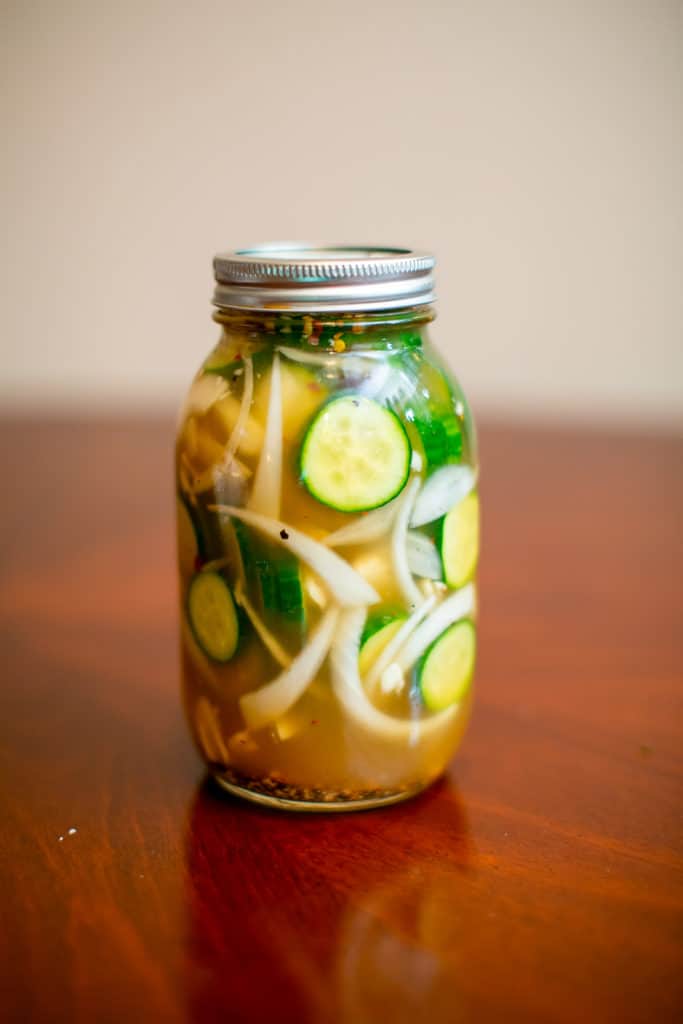
While I’m going to be using some very special and very hot peppers, I highly recommend you pick the ones that make the most sense for your palette.
Ingredients
This may or may not come as a surprise to you, but when making pickle juice, you don’t actually use pickles. You use cucumbers!
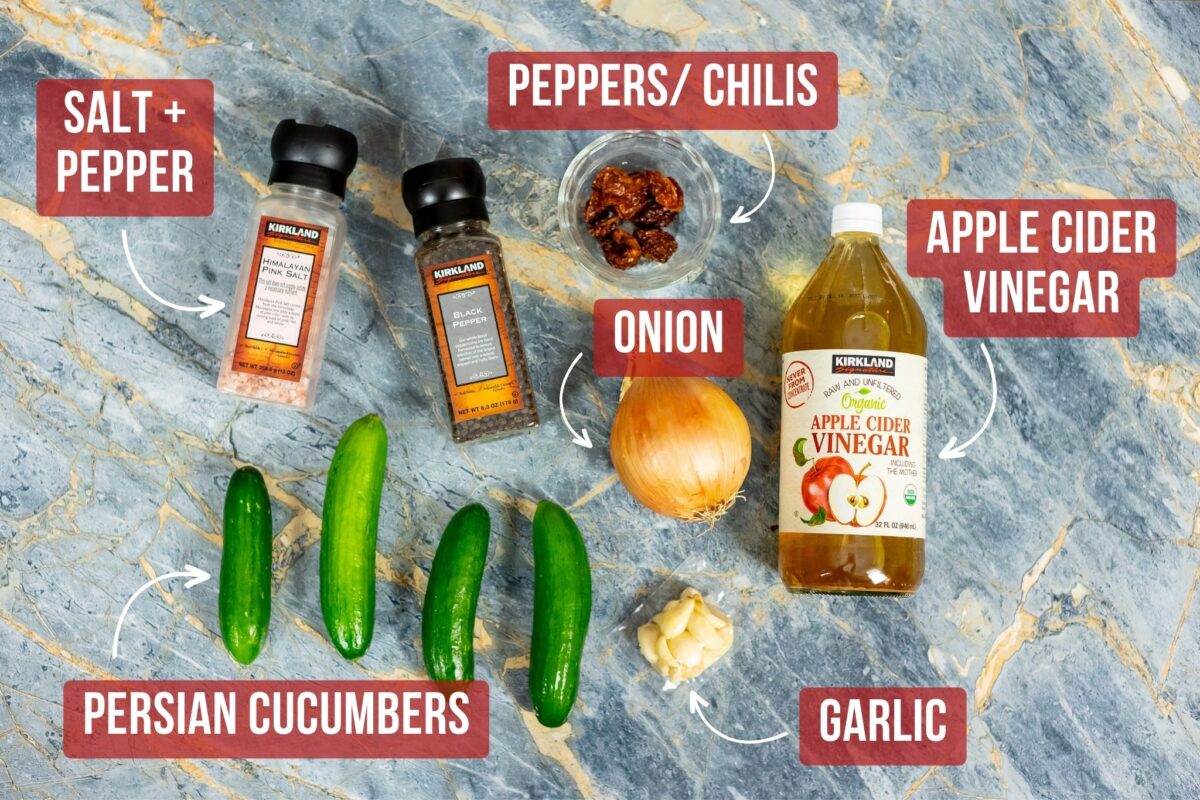
- Persian cucumbers or pickling cucumbers are ideal, if available in your area. The kirby variety makes a great pickle for its thin skin and ability to maintain a strong snap when pickled. Avoid slicers (the normal cucumber unless there is nothing else).
- Onion adds aromatics and sulfur notes to your pickle mix. They are also delicious to eat pickled as well so might as well kill two birds with one stone.
- Garlic cloves add aromatics and sulfur notes to your pickle mix like onions. Garlic also adds a pretty distinct garlic flavor that the onion won’t. If you like your pickles well-spiced, garlic is a very good addition.
- Salt and pepper can be added for taste. If you wanted to use whole peppercorns or fancy salts this can be done and will give your pickle juice much more depth and complexity.
- Apple cider vinegar and water are both used, and I follow the 50/50 rule. This helps me ensure the pH of my solution is low enough to keep the bad microorganisms out of my food. Don’t worry, you are not in chemistry class! If you go a little bit over, you will still be safe. When possible, err on the side of more vinegar than water.
- Chilis and peppers can be added based on your spice preference. In my batch of spicy pickle juice, I will be using a combination of 1 dried carolina reaper pepper and 1 dried ghost pepper, seeds and all (yes, this will be hot!).
Spice level warning: I do not recommend you try carolina reaper peppers or ghost peppers unless you are very familiar with eating them consistently. Most people will not even have access to these peppers, meaning you have no chance to develop a tolerance to this level of spice. There is basically no equivalent level of cayenne peppers you could eat that would give you tolerance for a reaper.
Recipe Instructions for Spicy Pickle Juice
Step 1: Wash Cucumbers
Wash the cucumbers thoroughly. Use cold water to wash your vegetables so they stay as firm as possible. Warm water and hot water will begin to cook the outside of your vegetables.
Step 2: Crush Garlic
Place the garlic cloves on a cutting board and crush them with a knife. You want to crush the garlic because this will help to flavor the brine more.
Step 3: Cut Onions
Using a chef’s knife, cut the onion in half. One half can be stored away, and the other will be used for the recipe. Take the ½ inion and cut it into slices that are between ¼-½ inch wide.

Step 4: Cut Cucumbers
Take the cucumbers and cut off the ends of them. Take the main part of each cucumber and cut it into medallions with your chef’s knife. The medallions should also be ¼-½ inch wide.
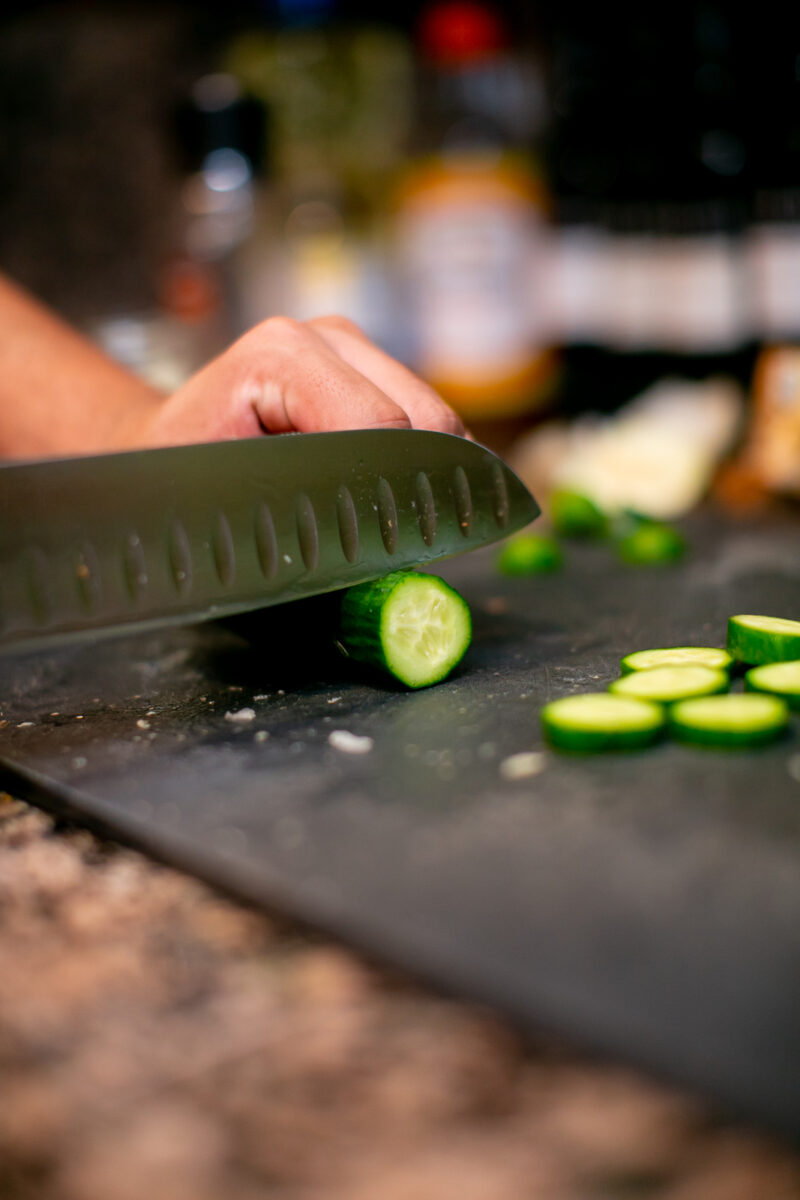
Step 5: Place Dry Ingredients into the Mason Jar
Place the crushed garlic, sliced onions, and cucumber medallions into a large mason jar. Then, sprinkle in your salt, pepper, and chilis. Make sure you use a mason jar that has a lid, because you will be shaking and sealing this later.
Step 6: Add Wet Ingredients into the Mason Jar
Once your dry ingredients are in the jar, add apple cider vinegar and water, making sure everything is submerged. While the recipe calls for 1.5 cups each of vinegar and water, if you can’t fit all of that liquid into the mason jar, fill the jar up until it’s almost full.
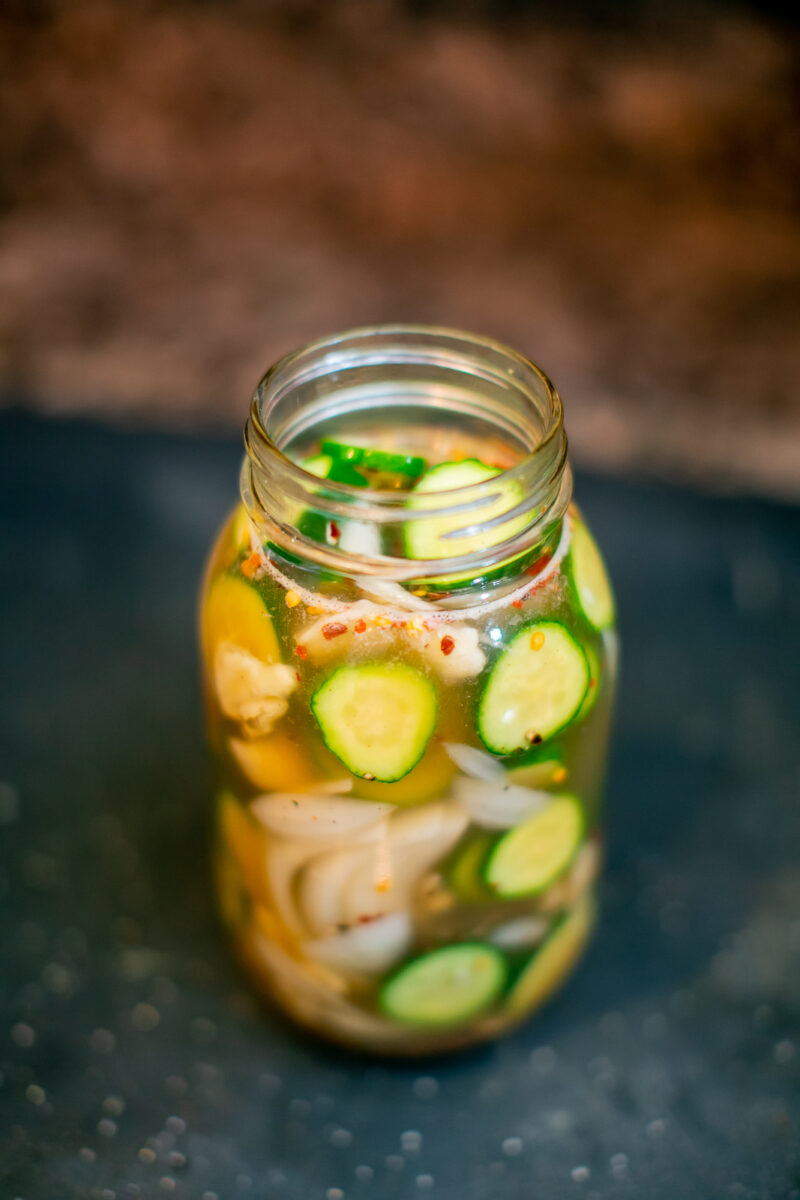
Step 7: Seal and Shake Jar
When all ingredients are in the jar, tightly seal it. Make sure it’s not going to leak, and then shake it vigorously until everything is mixed together.
Step 8: Place in Fridge
Place the jar the fridge for at least 2 hours. At that point, you can drink the juice and taste the cucumbers (now pickles!). Personally, I recommend waiting at least 24 hours for the best results and they will keep well up to 2 weeks with this method.
Substitutions in the Recipe
The obvious place to make substitutions is with the cucumbers. I don’t get too many cuke varieties here in San Diego. It is pretty rare to find another other than Japanese, English, and Persian cucumbers in my stores. If you are lucky and have access to a farmers market or specialty store that sells heirloom or pickling varieties, I highly recommend seizing the opportunity to use those.
For others, leaving the cucumbers out entirely may be the best play. You can pickle onions, garlic, cauliflower, cabbage, or peppers with the same recipe here.
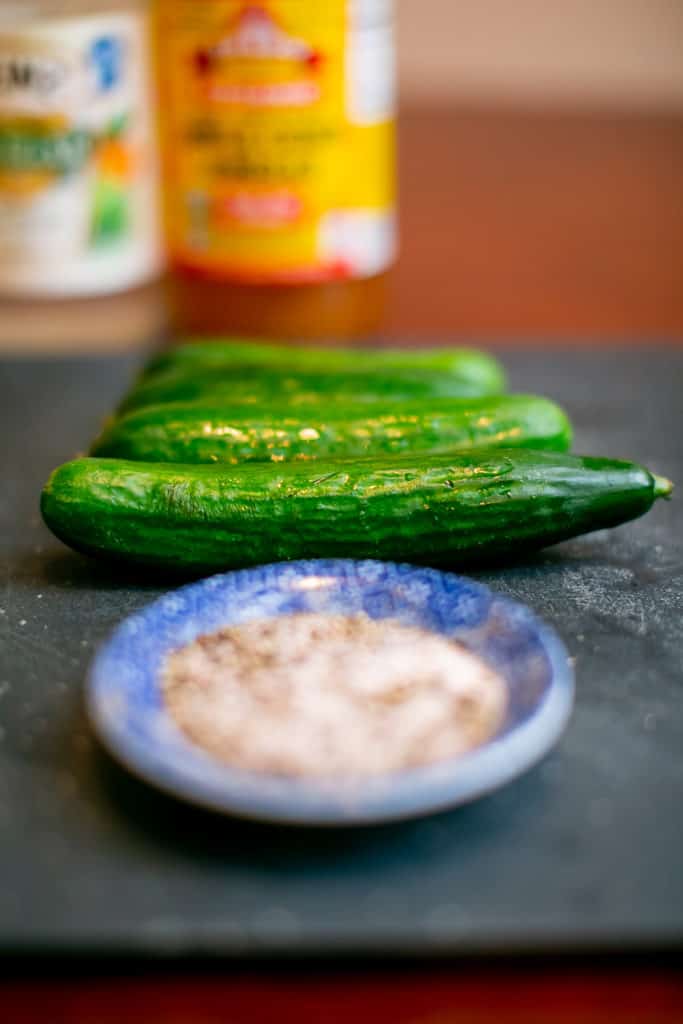
Pickle Juice Tips
Here are a few helpful tips I have for making pickle juice:
- When it comes to pickles, the brine is what gives the pickles its flavor characteristics. A spicy pickle juice recipe will yield spicy pickles whether those be from cucumbers, peppers, carrots, garlic, or whatever you want to pickle.
- The main challenge with pickle juice, and pickling in general, is food safety. To keep bacteria like botulism from developing, you need a pH level before 4.6 (which you may remember from high school chemistry is acidic).
- Limit air exposure of your brine. Unlike commercial pickle products, I do not recommend keeping fresh pickles for more than a week.
Related Questions
How Can You Spice Up Pickle Juice?
To increase the spice level in your pickle juice, you can add more (or hotter) peppers and spices to the jar. To make the juice very spicy, add a couple raw or dried chiles to the mix. I personally prefer my pickle juice with 1 carolina reaper or a chocolate habanero.
Can You Put Peppers in Pickle Juice?
You can put both eating peppers like bells and chili peppers like jalapenos, scotch bonnets, or reapers into pickle juice. I like mixing my pickles with chiles to maximize the spice factor.
How Long Does Homemade Pickle Juice Last?
Using the “quick method,” homemade pickle juice lasts about 2 weeks in the fridge. This method does not produce shelf stable pickles. To make shelf stable pickles with an extended shelf life, you will need to boil, sterilize, and seal (ie jarring / canning method).
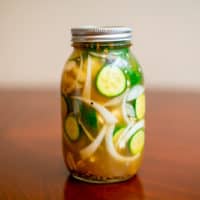
Ingredients
- 4 persian cucumbers
- 1/2 onion
- 8 garlic cloves
- 1 teaspoon salt and pepper
- 1.5 cup Apple Cider Vinegar
- 1.5 cup water
- Any chilis you want to add based on preference
Instructions
- Wash vegetables
- Crush garlic
- Cut onions into slices about ¼ to ½ inch wide
- Cut off the ends of cucumbers off and then cut cucumbers into medallions ¼ to ½ inch wide
- Place the garlic, onion, and cucumber into a mason jar, followed by salt, pepper, and chilis
- Add apple cider vinegar and water till everything is submerged
- Place the lid on and shake vigorously
- Place in the fridge for at least 2 hours
